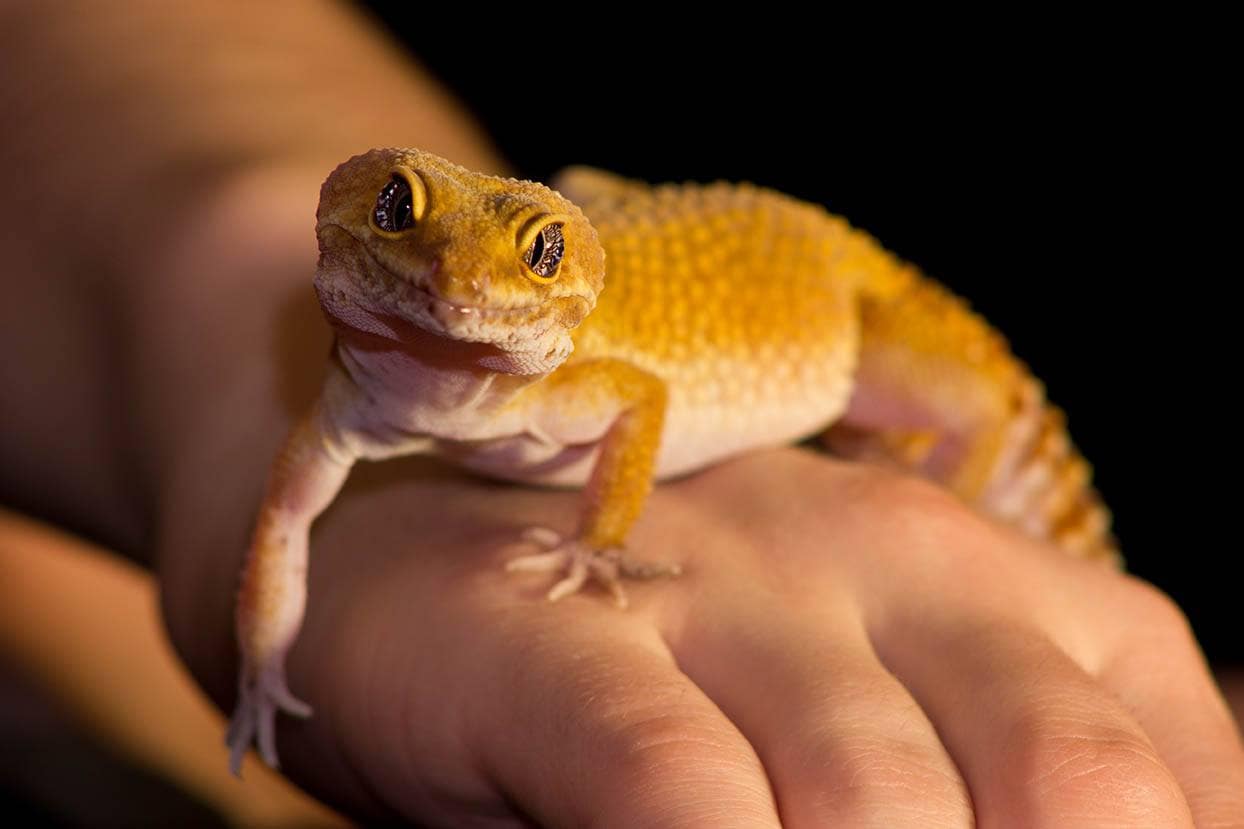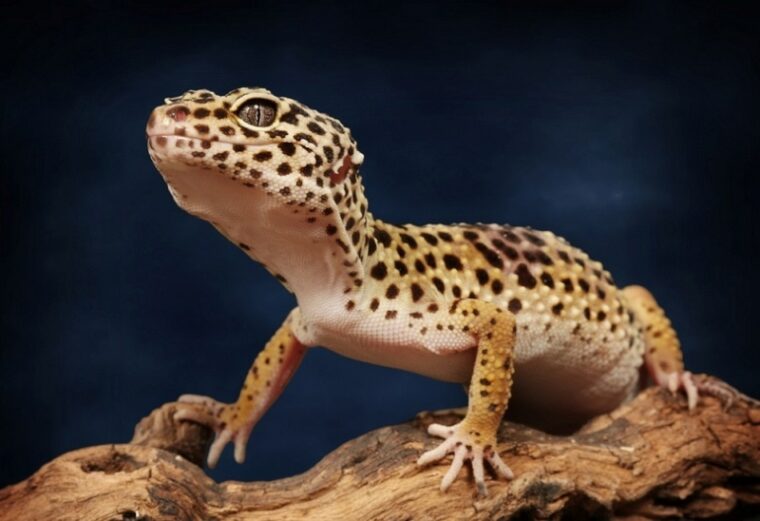
Click Below to Skip Ahead
The Leopard Gecko, scientifically known as Eublepharis macularius, is a magnificent reptile that boasts its leopard-like appearance. It has a yellow body with dark spots.
Leopard Geckos also have an enormous tail to store fat that can regenerate after it’s cut off. This reptile also uses the tail for communication. It rattles the tail when mating, hunting, and showing other geckos that they have been seen.
Although these reptiles are identified with their yellow and black markings, Leopard Geckos come in various colors, patterns, weights, and sizes. Just like other reptiles, sexual maturity is determined by its size and weight more than the age. This weight and size can generally go up to 40-80g and 8-11 inches.
Facts About Leopard Geckos
Family
Leopard Geckos have been bred for more than 30 years. They are naturally solitary, but if they should have a family, then a male gecko can live alone because they get aggressive if housed together with other males. Other family structures include a group of one male and several females or female gecko groups.
Habitat
These reptiles are mostly found in the rocky grasslands in the dry regions of the Middle East, Eastern, and Southeastern Asia. They usually burrow on the ground and are nocturnal to avoid daytime heat.
Diet
Leopard Geckos use their strong eyesight for hunting insects at night. Their diet mainly consists of crickets, mealworms, and caterpillar-like species.

Personality
Leopard geckos are small and beautiful lizards that are docile and harmless. They adapt fast to being handled and are easy to care for if you’re a first-time pet parent.
Predators
Their predators include snakes, foxes, and other large reptiles. However, geckos have extraordinary predator-evading abilities and can camouflage in the desert’s rocky grasslands thanks to their leopard-print skin.
They can stay hidden for a long time, only depending on their fat-storage in their tails, until they do not feel threatened anymore. Unlike other lizards, these geckos shed more often to prevent predators from detecting their scents.
Leopard Gecko Size and Growth Chart
| Age | Weight | Body Length |
| Hatchling | 2-5 g | 3-4 inches |
| 1 month | 15-20 g | 4 inches |
| 2 months | 18-30 g | 5 inches |
| 6 months | 25-60 g | 5-6 inches |
| 18 months | 40-80 g | 8-11 inches |
When Do Leopard Geckos Reach Their Full Size?

At birth, Leopard Geckos are usually 3 to 4 inches long. And, it is still a baby if it measures up to 3 grams in weight. As they grow, young juvenile geckos measure between 3 grams to 30 grams for 10 months.
A Leopard Gecko reaches adulthood at 12 months of age and can grow up to 120 grams. Adult female geckos reach 7 to 8 inches.
On the other hand, male geckos grow up to 8 to 10 inches. These lizards can keep growing from birth until they reach their full size as an adult at 18 months.
What Other Factors Affect Leopard Gecko Growth?
1. Poor Habitat Conditions
Incorrect size enclosure and lack of hides for privacy and security will affect your pet’s health and impact its growth.

2. Inaccurate Light, Humidity, and Temperatures
These reptiles are native to areas with humid subtropical climates. Therefore, a lack of similar conditions in captivity will impact a pet Leopard Gecko’s growth.
Ensure that its enclosure temperatures range between 75 to 90 degrees Fahrenheit during daytime and 65 to 75 degrees Fahrenheit at night. You should also maintain between 60% and 70% relative humidity levels to facilitate maximum growth.
3. Wrong Substrate
A wrong substrate will cause impaction and affect relative humidity levels that impact its growth. However, using correct reptile substrates like reptile carpets, shredded coconut fiber, and shredded barks will help preserve moisture and support necessary humidity for optimal growth.
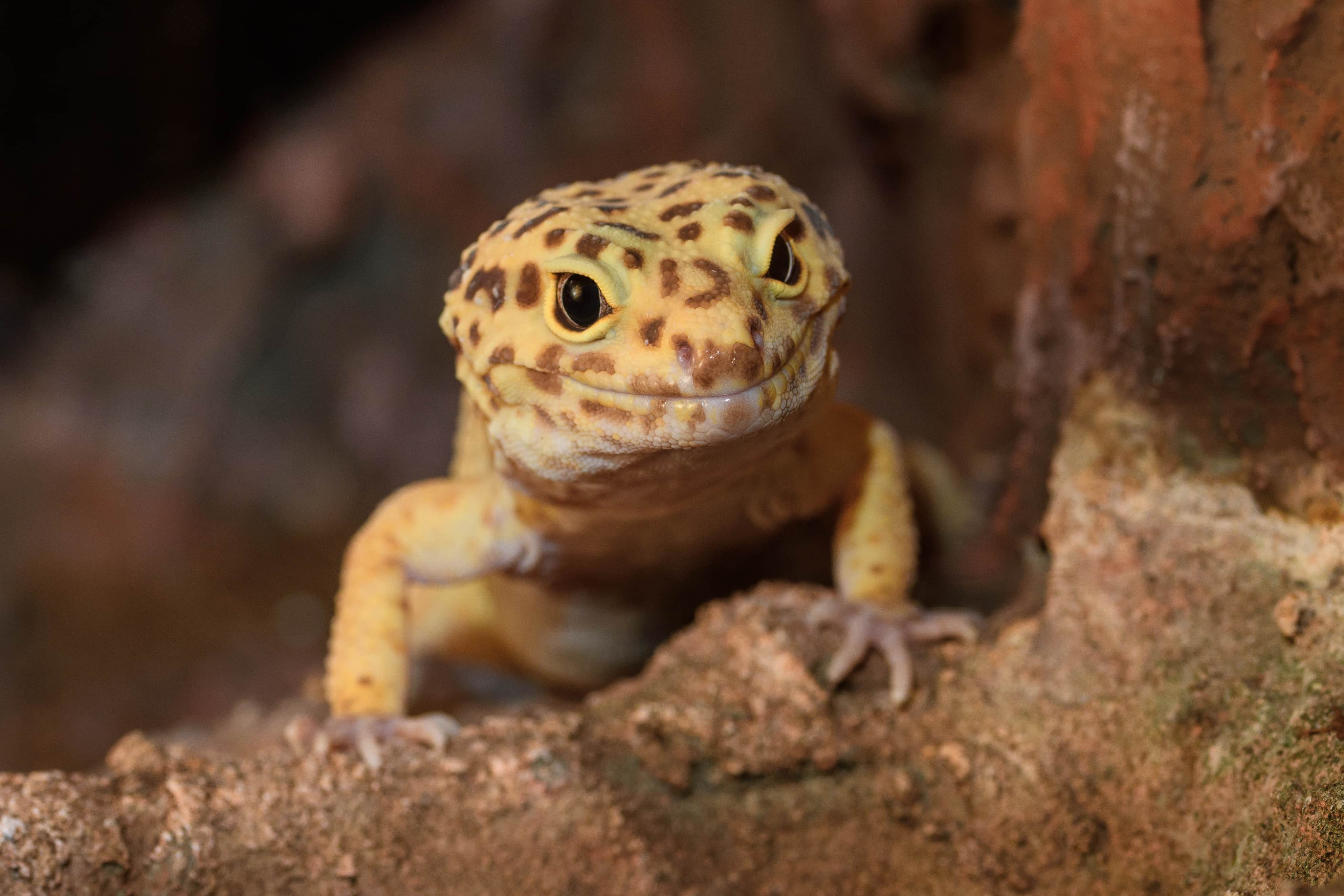
4. Parasites
When parasites attack a Leopard Gecko, you’ll start noticing diarrhea, severe weight loss, and reduced growth.
5. Metabolic Bone Disease (MBD)
Metabolic bone disease is caused by a calcium deficiency in a Leopard Gecko’s body. Therefore, captive geckos’ inability to absorb calcium results in low skeletal development and rapid weight loss. You can provide UVB lighting, calcium-rich foods, supplements, and vitamins for captive geckos to prevent this disease.

Ideal Diet for Healthy Weight
Leopard Geckos are carnivorous, feeding mostly on live insects. They mainly feed on crickets and mealworms. But, you can give them waxworms, cockroaches, tomato hornworms, beetles, sowbugs, and silkworms.
However, do not overfeed them as it can lead to obesity. Avoid large insects and feed insects within 15-20 minutes.
Feeding a leopard depends on its age and well-being. For instance, you can feed baby geckos every day, while healthy adult geckos only require meals once every other day.
Leopard Geckos are picky eaters and tend to change food preferences. Therefore, you should mix up your gecko’s diet with a blend of crickets, worms, or any other insect to give it a variety.
Why Is My Leopard Gecko Not Growing?
Here are some of the reasons why your leopard gecko might not be growing.
Poor Nutrition
The biggest reason why your pet is not growing is due to a low diet. Feeding the gecko in time and the correct amount per serving is useless if the meals do not contain all the nutrients it needs.
Transfer of Nutrients
Your pet can stop growing if its tail is healing or it is recovering from sickness. The reason is that the body has been exerting extra energy and using up all the nutrients to “repair” the lost tail or healing from a sickness. During this time, the only thing you can do is wait as you give it supplements until it gets back to its old self.
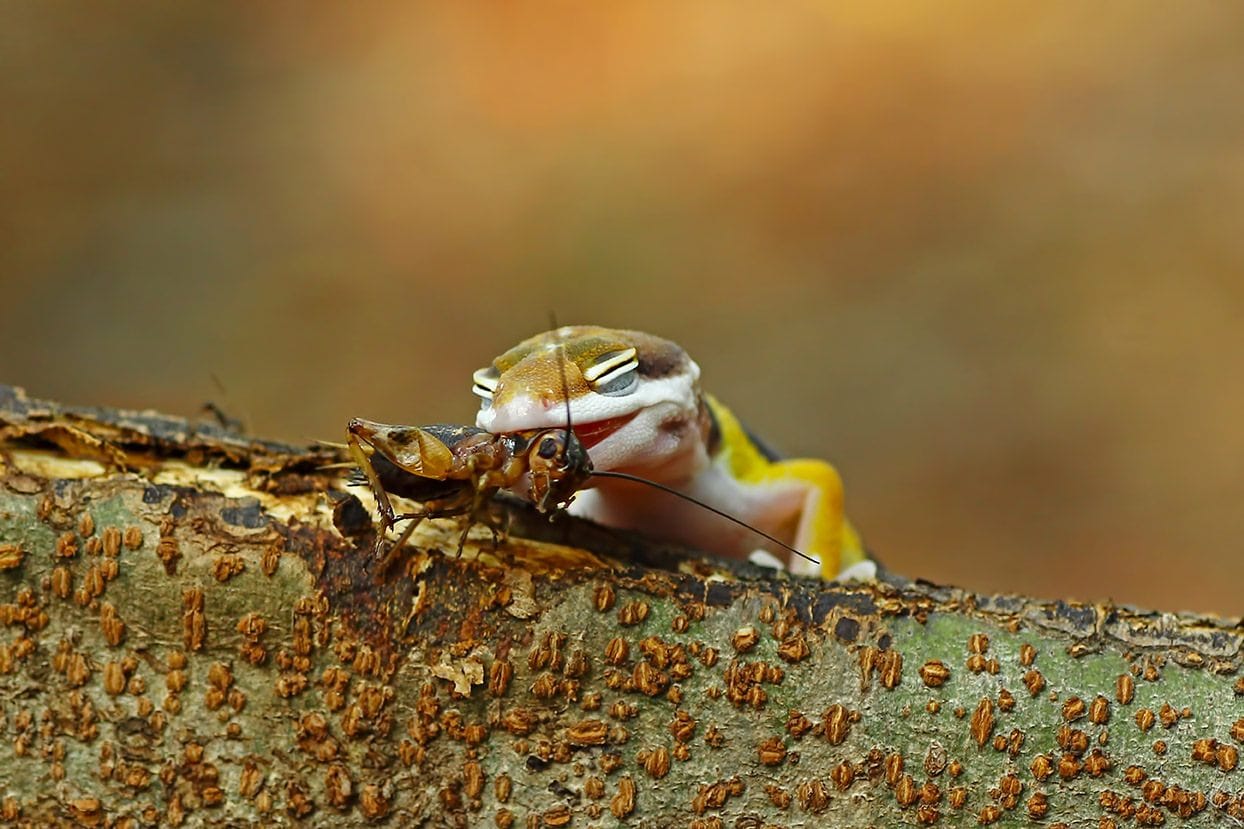
Cold Temperatures
These reptiles require heat to digest their food. Therefore, if the tank is too cold, the food may fail to digest well. Excess cold also affects their immunity.
Feeling Insecure
Leopard geckos are territorial. For this reason, if you have more than one gecko, have them in separate enclosures.
Your gecko may not be growing because the other Leopard Gecko in the enclosure is bullying it for food, a hiding spot, or water, leaving one gecko with improper body nourishment. Stress and poor nourishment will lead to stunted growth.
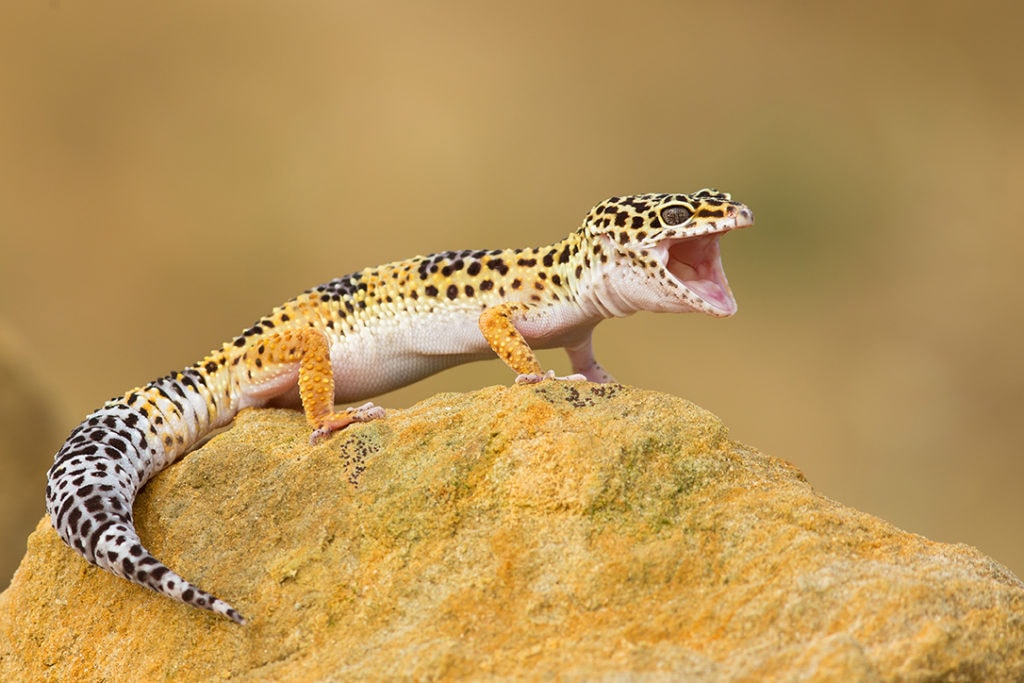
Final Thoughts
It’s easy to create a perfect home for Leopard Geckos because they are not-so-demanding pets. They are also not fussy eaters, and as long as you give them the correct nutrients and suitable living conditions, they can live for over 20 years.
Housing these endearing little reptiles is simple and straightforward because they are placid and not so active. Therefore, they don’t require vast enclosures.
However, a little distraction, lack of substrates and hiding spots, and poor nutrition can adversely affect your lizard friend’s growth. If it does not develop stunted growth, it can go down with catastrophic metabolic bone disease.
Featured Image Credit: Reinhold-Leitner, Shutterstock






